-
Video imaging system for remote detection of hidden threats
By adapting superconducting technology used in advanced telescope cameras, researchers have built a prototype video imaging system for detecting hidden weapons and other threats at distances up to twenty-eight meters away.
-
-
New spectrometry standard for handheld chemical detectors
When it comes to detectors for dangerous chemicals, toxins, or nefarious germs, smaller and faster is better. Size and speed, however, must still allow for accuracy, especially when measurements by different instruments must give the same result. The recent publication of a new standard provides confidence that results from handheld chemical detectors can be compared, apples-to-apples.
-
-
Squeezing light improves performance of MEMS sensors
Microelectromechanical systems, known as MEMS, are ubiquitous in modern military systems such as gyroscopes for navigation, tiny microphones for lightweight radios, and medical biosensors for assessing the wounded. Such applications benefit from the portability, low power, and low cost of MEMS devices. The use of MEMS sensors is now commonplace, but they still operate many orders of magnitude below their theoretical performance limits, due to two obstacles: thermal fluctuations and random quantum fluctuations, a barrier known as the standard quantum limit.
-
-
Compact, high-power terahertz source at room temperature developed
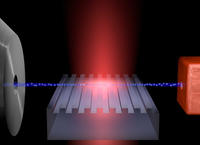
Terahertz (THz) radiation — radiation in the wavelength range of 30 to 300 microns — is gaining attention due to its applications in security screening, medical and industrial imaging, agricultural inspection, astronomical research, and other areas. Traditional methods of generating terahertz radiation usually involve large and expensive instruments, some of which also require cryogenic cooling. Researchers have developed a compact, room-temperature terahertz source with an output power of 215 microwatts.
-
-
The side of Homeland Security you won't see on TV
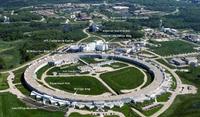
The way the Department of Homeland Security is often portrayed in popular culture — surveillance and secret agents — leaves out a crucial aspect of its role. It also works on technology to detect attacks as they are happening, and helps federal and local governments prepare for all kinds of disasters, from hurricanes to accidental chemical spills to anthrax attacks. Argonne Laboratory engineers contribute to this effort, helping local and state governments form emergency plans, run drills for a pandemic flu outbreak in the city of Chicago, and analyzed ways to enhance security at plants and factories across the country.
-
-
Smartphone “microscope” can detect a single virus, nanoparticles
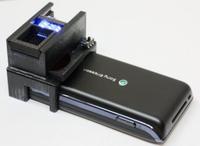
Your smartphone now can see what the naked eye cannot: A single virus and bits of material less than one-thousandth of the width of a human hair. Researchers have created a portable smartphone attachment that can be used to perform sophisticated field testing to detect viruses and bacteria without the need for bulky and expensive microscopes and lab equipment. The device weighs less than half a pound.
-
-
U.S. military trains to support civil authorities during domestic CBRN incident
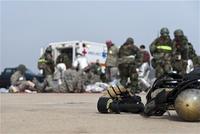
Vibrant Response 13-2 exercise, conducted by U.S. Northern Command and led by U.S. Army North (Fifth Army), is an annual event and is the country’s largest CBRN exercise. The training exercise is used to evaluate a military unit’s operational and tactical ability to support civil authorities during domestic incidents involving chemical, biological, radiological, or nuclear weapons.
-
-
Molecule “scanner” uses terahertz radiation to identify single molecules
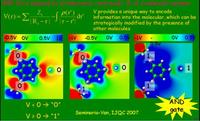
Molecules could soon be “scanned” in a fashion similar to imaging screenings at airports, thanks to the world’s smallest terahertz detector, developed by University of Pittsburgh physicists. The scanner has the ability chemically to identify single molecules using terahertz radiation — a range of light far below what the eye can detect.
-
-
Approaches to international consequence management for CBRNE incidents
The National Research Council (NRC) of the National Academy of Sciences, through a grant sponsored by NIST’s Office of Law Enforcement Standards (OLES), is organizing an effort to understand the metrics and measures that are needed to develop standards of response that will support the basic capabilities of a country or region to respond to a chemical, biological, radiological, nuclear, or explosive (CBRNE) incident
-
-
Green laser pointer identifies traces of dangerous chemicals in real time
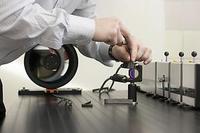
By using an ordinary green laser pointer, the kind commonly found in offices and college lecture halls, an Israeli research team has developed a new and portable Raman spectrometer which can detect minute traces of hazardous chemicals in real time; the new sensor’s compact design makes it a candidate for rapid field deployment to disaster zones and areas with security concerns
-
-
Long Beach Police Department purchases underwater inspection system for port
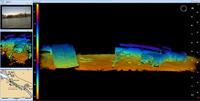
The Port of Long Beach is the second busiest seaport in the United States and is a major gateway for trade with Asia, handling more than six million containers annually; to enhance port security, the City of Long Beach Police Department has purchased an Underwater Inspection System (UIS) from Cod Octopus
-
-
Immediate, in-the-field identification of hazardous materials
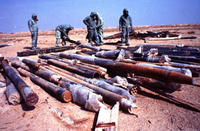
Soldiers in war zones, and law enforcement and first responders on the scene will soon have the ability to collect and immediately analyze trace amounts of potentially dangerous chemical, explosive, or biological agents with the help of a surface swabbing device developed and prototyped by a Maine-based technology company with the help of the University of Maine researchers
-
-
Improved disaster resilience is imperative for U.S: report
A new report from the National Academies says that it is essential for the United States to bolster resilience to natural and human-caused disasters, and that this will require complementary federal policies and locally driven actions that center on a national vision – a culture of resilience; improving resilience should be seen as a long-term process, but it can be coordinated around measurable short-term goals that will allow communities better to prepare and plan for, withstand, recover from, and adapt to adverse events
-
-
General Dynamics to integrate CBRN device in Army radios
General Dynamics C4 Systems announced last week that it will work with U.S. Army researchers to install wireless-networking chips on radios that can also detect the presence of dangerous chemicals on the battlefield
-
-
Record revenues for Universal Detection Technology
Last week Universal Detection Technology, which sells early warning monitoring technology for biological, chemical, and radiological threats, announced record high revenues for its most recent quarter
-
- All
- Regional
- Water
- Biometrics
- Borders/Immig
- Business
- Cybersecurity
- Detection
- Disasters
- Government
- Infrastructure
- International
- Public health
- Public Safety
- Communication interoperabillity
- Emergency services
- Emergency medical services
- Fire
- First response
- IEDs
- Law Enforcement
- Law Enforcement Technology
- Military technology
- Nonlethal weapons
- Nuclear weapons
- Personal protection equipment
- Police
- Notification /alert systems
- Situational awareness
- Weapons systems
- Sci-Tech
- Sector Reports
- Surveillance
- Transportation
Advertising & Marketing: advertise@newswirepubs.com
Editorial: editor@newswirepubs.com
General: info@newswirepubs.com
2010-2011 © News Wire Publications, LLC News Wire Publications, LLC
220 Old Country Road | Suite 200 | Mineola | New York | 11501
Permissions and Policies
Editorial: editor@newswirepubs.com
General: info@newswirepubs.com
2010-2011 © News Wire Publications, LLC News Wire Publications, LLC
220 Old Country Road | Suite 200 | Mineola | New York | 11501
Permissions and Policies
